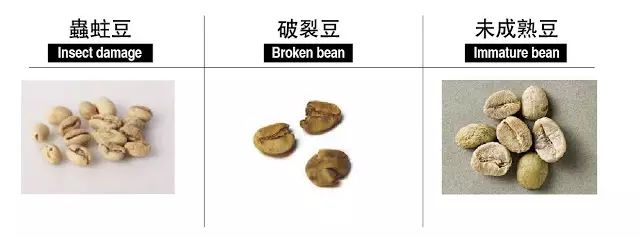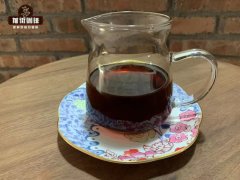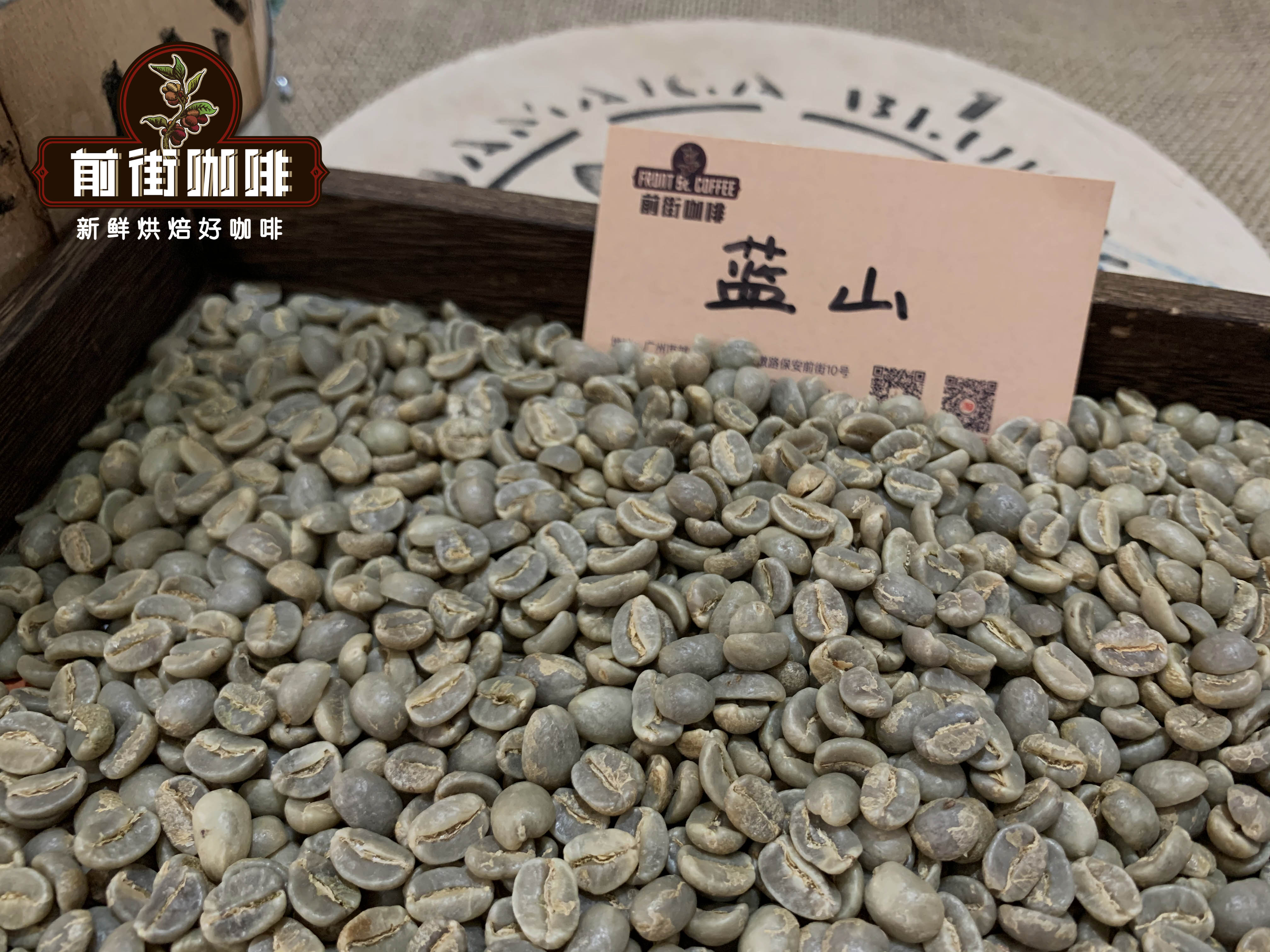What are the defective beans in coffee? Effects of primary defective beans and secondary defective beans on coffee flavor
Picking beans is a term that has been mentioned constantly in the boutique coffee industry in recent years. What exactly is picking beans?
The coffee beans bought by ordinary consumers are roasted ripe beans, and the quality of raw beans can no longer be known. It is not terrible to swallow, the terrible thing is that the coffee beans with defective beans may carry biotoxins after brewing, which is seriously harmful to health, so manual selection has become an important and not careless gatekeeper step.
Take the water washing method as an example, the color of unblemished raw coffee beans should be uniform and glossy emerald green; there are many reasons for defects, from cultivation, picking, peeling, fermentation, drying and other post-processing, and finally to the storage process is full of variables.
Of course, it is most ideal to buy raw beans with few defects from the beginning, and it is also expected as a baker, but even if the source of high-quality raw beans is advertised, the proportion of defective beans is still 30.5%, which shows that defective beans are hard to avoid.
SCAA American Fine Coffee Association (Specialty Coffee Association of America) divides defective beans into primary defects and secondary defects. Compared with secondary defective beans, primary defective beans have a more serious impact on the taste and aroma of coffee and are not allowed to appear in boutique coffee, while secondary defects are deducted according to type and quantity.

What are the first-class defective beans?
Black bean (Black Bean)
The causes of ▽ are insect pests, overripe fruits, poor drying equipment, areas with high humidity and microbial infection caused by excessive fermentation, so the bean heart, which is supposed to be turquoise, turns black.
✖ flavor aroma and influence: with rotten sour smell, musty smell, phenolic smell, etc., mixed and pungent taste, there may be biotoxins.
Fermented beans, literally translated as smelly sour beans (Sour Bean)
The cause of ▽: beans that produce contaminated fermentation are placed in fermentation buckets for too long, use contaminated water for fermentation, or dry for too long.
✖ flavor aroma and influence: similar to the sour taste of edible vinegar, the taste of bad wine fermentation, etc., spicy and unpleasant smell.
Worm-eaten bean (Insect Damaged Bean)
The cause of ▽: caused by insect pests, coffee bark beetles and other pests lay eggs on coffee trees, and the hatched larvae eat coffee fruits to form cavities; storage in harsh conditions may also occur.
✖ flavor aroma and influence: coffee produces a dull or strange smell, resulting in a reduction in wet aroma and flavor.
Moldy bean (Fungus Damaged Bean)
Showing yellow, yellowish-brown or reddish-brown spots with moldy powder.
The cause of ▽: stored in a warehouse with too high humidity, moldy beans improperly preserved, or contaminated during storage of raw beans.
✖ flavor aroma and its effects: turbid taste, reduced flavor, fermentation flavor, mildew flavor, soil flavor, phenolic flavor, etc., in which mold will produce a large number of "ochratoxin". Studies have shown that long-term low-dose intake can cause renal tubular cell necrosis, pathological changes, and even carcinogenesis.
Foreign body (Foreign Matter)
Unimaginable foreign bodies such as stones or branches must be picked out, otherwise the bean grinder may be damaged.
Don't doubt, we really picked a corn! )
The cause of ▽: it may occur in any process of raw bean treatment.
Understanding of secondary defective beans
Broken bean (Broken Bean)
The cause of ▽: beans damaged during transportation or handling.
✖ flavor, aroma and influence: affect the appearance of ripe beans, easy to cause uneven baking, may have scorched taste, too much carbonized ingredients will have adverse effects.
Shell bean (Shell Bean)
The cause of ▽: beans that become shell-shaped due to developmental problems.
✖ flavor, aroma and influence: affect the appearance of ripe beans, easy to cause uneven baking, may have scorched taste, too much carbonized ingredients will have adverse effects.
Unripe bean (Immature Bean)
(photo source: diet FoodNext)
The cause of ▽: beans harvested before the fruit is ripe may suffer from insect pests or lack of water in the process of planting.
✖ flavor aroma and influence: with a strong fishy smell, raw bitter taste.
Floating bean (Floater Bean)
The cause of ▽: it is stored in a warehouse that is too dry and too hot, or the water evaporates too much after processing.
✖ flavor aroma and influence: the fresh taste and aroma of coffee will disappear, leaving only an insipid smell.
Withered bean (Withered Bean)
The cause of ▽: when the fruit is ripe, the phenomenon of insufficient water, insufficient nutrients of coffee trees, or drastic changes in the natural environment occur.
✖ flavor aroma and influence: there is a hint of grass and soil flavor, mainly affecting the overall aroma.
Amniotic membrane bean (Parchment Bean)
Beans with incomplete shelling and residual endocarp.
The cause of ▽: the main reason is that it occurs in the process of shelling.
✖ flavor aroma and influence: residual pericarp, resulting in astringency or miscellaneous flavor.
Important Notice :
前街咖啡 FrontStreet Coffee has moved to new addredd:
FrontStreet Coffee Address: 315,Donghua East Road,GuangZhou
Tel:020 38364473
- Prev

What is the reason why the coffee is too bitter? What substances does the bitterness of coffee come from and how to prevent it from being too bitter?
Bitterness has become a terrible word in the boutique coffee industry. We all know that good coffee should be sweet and balanced, may be a little sour, and there is absolutely no need to add sugar to make it delicious. What makes coffee bitter? is it always that bad? Doesn't it taste bitter? Bitterness is not always a bad thing. In fact, if your coffee doesn't taste bitter at all, you may find it too
- Next

Coffee defect rate refers to what coffee beans how to choose good? The basis for coffee bean grading and classification
How to choose coffee beans? When picking green beans, you can use a commercially available picking tray, or use a blue or black tray. The obvious color contrast makes it easier for the human eye to recognize the blemish characteristics of green beans. Before picking beans, we must first decide the priority of picking, which can speed up efficiency. It is suggested that the inspection order is to remove foreign bodies and black beans with obviously different colors first, and then dull ones.
Related
- Beginners will see the "Coffee pull flower" guide!
- What is the difference between ice blog purified milk and ordinary milk coffee?
- Why is the Philippines the largest producer of crops in Liberia?
- For coffee extraction, should the fine powder be retained?
- How does extracted espresso fill pressed powder? How much strength does it take to press the powder?
- How to make jasmine cold extract coffee? Is the jasmine + latte good?
- Will this little toy really make the coffee taste better? How does Lily Drip affect coffee extraction?
- Will the action of slapping the filter cup also affect coffee extraction?
- What's the difference between powder-to-water ratio and powder-to-liquid ratio?
- What is the Ethiopian local species? What does it have to do with Heirloom native species?

